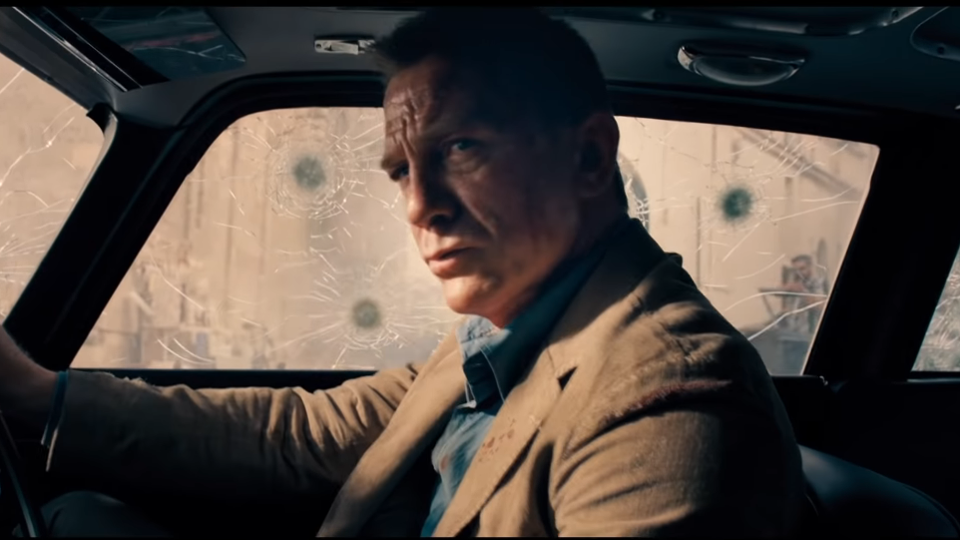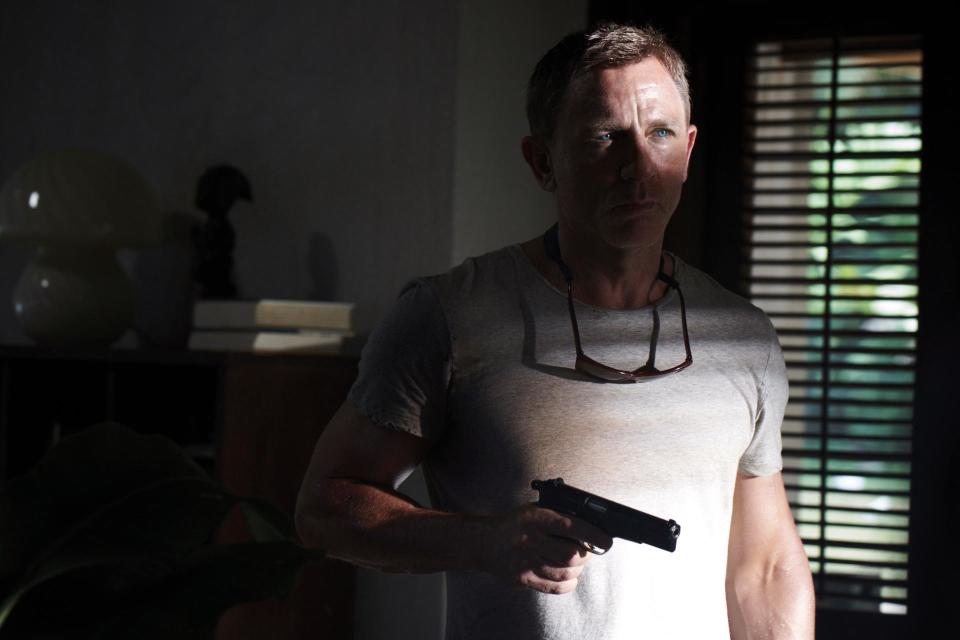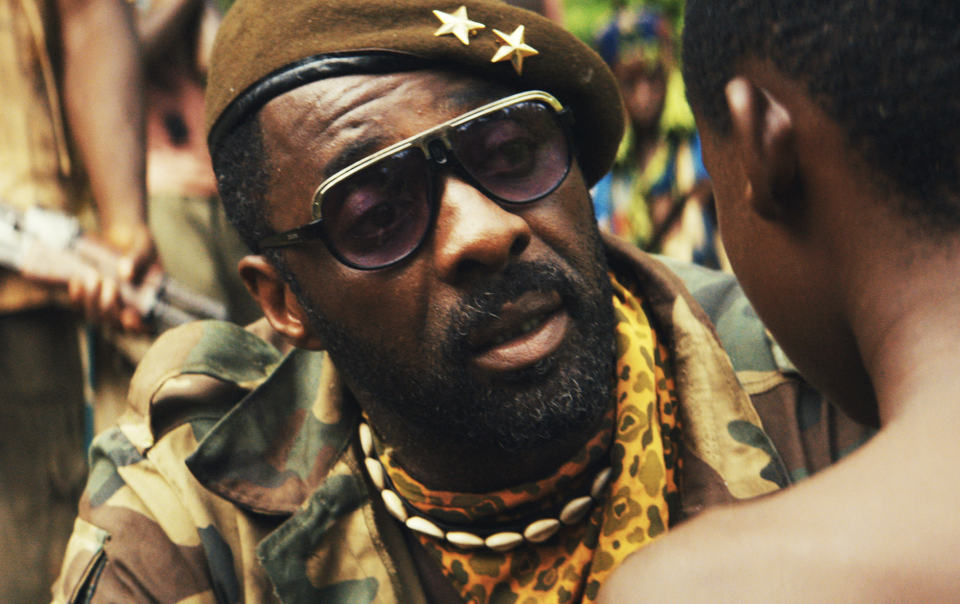‘No Time to Die’ Director Cary Fukunaga on the Future of James Bond ‘Outside the Corporate Sphere’

- Oops!Something went wrong.Please try again later.
- Oops!Something went wrong.Please try again later.
Over the decades, many filmmakers have catapulted from Sundance breakouts to commercial auteurs, but few have amassed an eclectic body of work like Cary Joji Fukunaga. In the 12 years since his acclaimed immigration thriller “Sin Nombre” put him on the map, Fukunaga has navigated virtually every layer of the film and TV landscape: After his lavish “Jane Eyre” adaptation, he helped catalyze the potential of A-list movie stars on television with Season 1 of “True Detective,” then became the first guinea pig for Netflix’s move into awards-friendly filmmaking with the haunting war epic “Beasts of No Nation.”
After “Maniac,” his head-spinning sci-fi miniseries for the streamer, Fukunaga switched modes once again with the ultimate studio gig as the director of “No Time to Die,” the 25th entry in the James Bond franchise.
More from IndieWire
'No Time to Die' Adds Heft to Strong October After 'Venom: Let There Be Carnage'
Bond 26: Where the 007 Franchise Should Go After Shocking 'No Time to Die' End
When Fukunaga was hired for the gig in by producer Barbara Broccoli, he expected to have a finished product in theaters by early 2020. The pandemic had other plans. Nevertheless, after a labyrinthine year-and-a-half of release schedule shifts, “No Time to Die” finally opened overseas last week and makes its way to North American theaters today. In doing so, it brings a dramatic finale to Craig’s five-movie Bond arc, as Fukunaga’s approach gets personal with the character and his reservations over the exhausting nature of his job. In between rapid-fire car chases and globe-hopping showdowns, “No Time to Die” is essentially a midlife crisis movie.
And for the 44-year-old Fukunaga, it’s an opportunity to think through a career with similar introspection. He spoke to IndieWire about his usually long Bond journey and why he was ready to take a break from it.
You were promoting the release of “Maniac” on Netflix when the news came out that you would direct the next James Bond. How did your expectations back then match reality?
It’s crazy that it was almost exactly two years ago and one month. It feels like the last three years have been a blur. I was running straight from “Maniac” post-production into a really urgent writing period on “No Time to Die” and then basically in red alert mode all the way through post-production, then hit the pandemic and was in isolation for months, and now I’m back to work again.
It was life, mixing with art, mixing with interruptions. There are a whole lot of thoughts that go through my mind when I think about looking back. I guess the biggest thing I feel right now is that having done it, I don’t think I ever see myself going through that again, because it was so difficult. But at the same time, I can’t imagine what life would’ve been like without it, because it’s obviously been a gamechanger.
The expectations for a James Bond movie are so extreme, especially in the U.K., that you must have been surprised by the constant scrutiny and rumors surrounding the production. How did that impact the vibe on the set?

United Artists Releasing
I just observed how Daniel, Barbara, and [producer] Michael [Wilson] handled those things. They would just ignore it. It was very interesting since they’ve obviously grown up with that scrutiny — every Bond film and the cultural impact that it’s had — and they just don’t address it. Nothing really personally affected me until they said I was playing videogames on the set and delaying production for three hours. Then I had family members and friends writing me, asking me if this was true. It’s really frustrating because you want to be able to say, “This is bullshit,” but I just followed their strategy and didn’t say anything. It’s weird to not defend yourself. But I did learn that if you don’t say anything, it disappears a lot quicker.
The most surprising aspect of “No Time to Die” is the emotional tenor of certain scenes. Early on, Craig and Lea Seydoux share a very sad moment in Bond’s car where he looks as though he’s ready to give up. Those extreme closeups are some of the best acting Craig has done.
I didn’t have to coach that performance out of Daniel. I just put the cameras in there and he knew what to do. As a director, that’s what you have to do. Roll the cameras and here’s what to do. There’s no coaxing required there.
How did you get those shots?
Those closeups came in later. I’d shot a bunch of the stuff in Matera and we actually did some pickups onstage because the impact had to be done onstage. We couldn’t do that in real-life because you can’t T-bone a car with Daniel inside of it. While we were doing that onstage, I took the opportunity to jump into that moment because those cameras are gigantic. Getting an IMAX camera that close for an over-the-shoulder shot with two actors is nearly impossible. We used a five-perf camera to get in closer at that moment. That scene is meant to put the audience right there with them with all the bullets hitting, so when we get to that brief moment of quiet before he goes into action, it’s like you’re almost kissing-close to him.
It’s more intimate than we usually get in a Bond movie.
I don’t do that many closeups in my movies and shows, so it was closer than I’d normally go. But for the two of them, this is their last moment together. It is sad, bittersweet, melancholic, and leads into the goodbye at the train station. To me, it’s the most heartbreaking moment in the film.
You interviewed some MI6 and CIA agents as part of your research for the project. How did that inform decisions you made about the plot?

MGM
We did speak to professionals about it, but as interesting as that is, the real stuff — what Bond does, the 007 stuff — is so outside of reality that we just had to go for it. It was more interesting to go back to the books and the short stories and previous films to build off the universe that has been created, and even the vocabularies. For example, the British MI6 intelligence service doesn’t use the word “agent” for their operatives. An agent is more akin to when the CIA calls someone an “asset.” It’s a local individual they’re using in their regions to collect information.
It’s no secret that Danny Boyle was originally going to direct this movie. How much did you glean about his original intentions for the project and how did that inform your own decisions?
When Danny Boyle left, they wanted to start over again from scratch. It was like starting from a blank page to going into production within about five months. There are some glimmers of the earlier version but those are mainly things that Barbara and Michael wanted to put in the story anyway. I can’t say where the initial concepts or ideas came from because from my first meeting, there were ideas for characters, ideas for new revelations in the story, and ideas for the ending — particularly the results of the ending. So that’s what I had to start with and it was about how to get there.
You aren’t allowed to discuss the specifics of the movie’s climax, but obviously it’s the end of Daniel’s Bond arc. Having spent time with this character, how much potential do you see to reinvent him? Is Bond always going to be a straight white guy or could the “Bond” concept evolve beyond that?
That’s such tricky territory to walk into — what Bond can be or what Bond is — but I can say this: The character’s DNA itself can’t change, you know, being this troubled, conflicted outsider railing against authority and operating autonomously. Those things need to remain the same. In terms of all those things, the idea of representation within the character of Bond … in a lot of ways, Bond belongs to culture. I don’t know what the right decision is there. I’m just thankful that I don’t have to make it.
It’s funny you say that since Barbara Broccoli is quoted in the Wall Street Journal saying that she wants you back.
[laughs] I hadn’t even seen that. Uh, I need to take a break first.
There’s a certain irony to the pressure on “No Time to Die” to perform as a major theatrical release around five years after you did “Beasts of No Nation” for Netflix with a very minimal theatrical presence. You’ve experienced both ends of the distribution equation.

Netflix
“Beasts of No Nation” put me in a really conflicted position. It was a movie I’d been working on for many years, more than 10 years before it came out, and I was very aware that a movie is best experienced on a big screen with a group. That’s always going to be the case. I know it from experiencing cinema — whether it’s a documentary or a commercial, being with an audience just enriches your experience. It’s an amplifier for everything. “Beasts” could’ve had a run in the cinemas with an arthouse platform release, with the typical prestige release of five cinemas in five cities and then maybe bring 40-50 screens in its maximum presence. It could’ve been considered more seriously if that was the release.
But I made that film to be seen. I knew that if I went that direction, I would have a fraction of a percentage of people seeing the film versus if I put it on Netflix, I would get tens of millions of people to watch the film. So I had to make that choice, and it wasn’t an easy choice. I knew that by going with Netflix, it would basically dash any hopes of recognition within the industry in terms of awards and I knew it would be accused of abandoning cinema, but it also meant this experience that was so important to me would be experienced by literally ten-thousand fold.
In the case of Bond, we shot this on IMAX to be on the big screen. Bonds are meant to be experienced in the cinemas. People should be going with their parents, their kids, their friends. It should be an event. That has happened going back generations. There’s no version of that film premiering on a streaming format. I was not part of the decision-making at all, but there was concern on my part during Covid that this might be the end result if the studio just needed to cash in and cut their losses. So I’m just really thankful that we got a chance to wait until some people felt safer to come back.
You did your rounds interviewing for Marvel and Star Wars projects. Why did you pass on those and go for Bond instead?
I think the biggest reason is that the tone and character of Bond fits more in the wheelhouse of movies I’ve already made and understand, especially Daniel Craig’s Bonds. “Casino Royale” is a much grittier, grounded version of Bond and that was something that as a tentpole project I could get with. Also, the legacy of it is much more than a singular thing. That’s probably why I drifted that way. There’s also something about how it’s being run by the same family — there’s a continuity to that that made it attractive to me, that made it seem like it was outside of the corporate sphere.
You’re returning to work on “Shockwave,” your long-gestating movie about the Hiroshima blast. Since you first started developing that, we’ve learned that Christopher Nolan’s next project is focused on the Manhattan Project and may include its own depiction of that nuclear attack. What is it about this moment in history that makes it relevant today?
The finger near the red button is still a real thing. The threat of annihilation and choices made that could lead to it are still ever-present. The choice by the United States to use that bomb is a very fascinating one to dissect. We’ve only been told one version of it throughout history, especially in a public space. I want to look at it from a more multifaceted view.
There’s actually a Tumblr out there obsessed with the possibility that you could win an Oscar one day. How much does that matter you?
Honestly, it does not matter to me. When I did “Beasts of No Nation,” if I was hungry for awards, I would’ve pushed aside a Netflix deal and gone for that platform release. I’m not hungry for awards. I just want to make good movies.
An MGM release, “No Time to Die” is in theaters now.
As new movies open in theaters during the COVID-19 pandemic, IndieWire will continue to review them whenever possible. We encourage readers to follow the safety precautions provided by CDC and health authorities. Additionally, our coverage will provide alternative viewing options whenever they are available.
Best of IndieWire
New Movies: Release Calendar for October 8, Plus Where to Watch the Latest Films
45 Directors Pick Favorite Horror Movies: Bong Joon Ho, Tarantino, del Toro and More
'Copshop' Breaks Through in Action-Crazy Specialty Box Office Rankings
Sign up for Indiewire's Newsletter. For the latest news, follow us on Facebook, Twitter, and Instagram.

